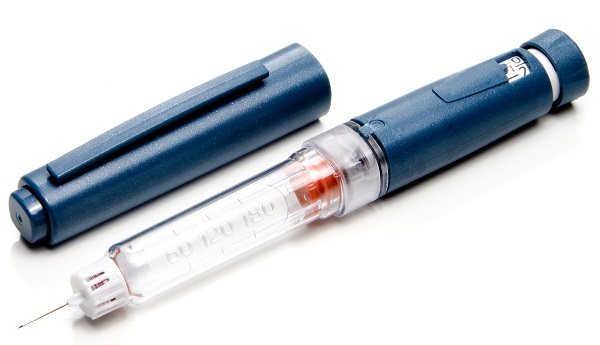If you have type 1 diabetes, your body does not make insulin. Your immune system destroys the cells in your pancreas that make insulin. Insulin, a hormone created by the pancreas, helps to create energy from glucose. Sometimes your body does not make enough or no insulin or does not use insulin properly, then glucose increases in your blood and insulin cannot control it.

In most people with type 1 diabetes, the body’s immune system, which usually fights infections, destroys the cells in the pancreas that make insulin. As a result, your pancreas stops making insulin. Without insulin, glucose is not released as energy to your cells and your blood glucose rises above normal. People with type 1 diabetes need to take insulin every day to survive.
Who is likely to get type one diabetes?
Type 1 diabetes usually occurs in children and young adults, although it can occur at any age. If diabetes is to a parent or sibling, the chances of developing type 1 diabetes may increase. About 5 percent of people with diabetes have type 1.
What are the symptoms of type 1 diabetes?
Symptoms of type 1 diabetes are severe and usually start appearing within a few days. Symptoms may include:
- Increased thirst and urination
- Increase in appetite
- Blurred vision
- Fatigue
- Weight loss phenomenon
Sometimes the first symptom of type 1 diabetes is a dangerous condition called diabetes ketoacidosis (DKA). Some symptoms of DKA include:
- Smells of fruits in breath
- Dry skin
- Nausea or vomiting
- Stomach pain
- Difficulty breathing
- Confused or trouble concentrating
DKA is serious and dangerous. If you or your child has DKA symptoms, contact your doctor immediately or go to the emergency room at the nearest hospital.
Causes of type one diabetes
Experts believe that the causes of type 1 diabetes contain genes and environments, such as viruses, that can trigger the disease. Researchers have worked to test for the cause of type 1 diabetes.
Diagnose type 1 diabetes
Doctors usually test people with type 1 diabetes who clearly have symptoms of diabetes. Doctors often test random plasma glucose (RPG) to diagnose type 1 diabetes. This blood test shows your blood sugar levels at one point in time. Sometimes doctors also do A1C blood tests to find out how many days someone has a high level of blood sugar.
Although these tests can confirm that you have diabetes, but it does not know which diabetes you have. Treatment depends on the type of diabetes, so it becomes important to know whether you have type 1 or type 2 diabetes.
To find out if your diabetes is type 1, your doctor may test your blood for some autoantibodies. Autoantibodies are antibodies that accidentally attack your healthy tissues and cells. The presence of certain types of autoantibodies is common in type 1 but not in type 2 diabetes.
Because type 1 diabetes moves in families, your doctor may test your family members for autoantibodies. If you have a brother or sister, child, or parent with type 1 diabetes, you will have an autoantibodies test. People whose age is 20 years or less.
What medications should I take to treat type 1 diabetes?
If you have type 1 diabetes, then you should take insulin because your body is no longer making hormones. Different types of insulin start working at different speeds, and each has an effect on time. You may need to use more than one type of insulin. Common options include a needle and syringe, insulin pen or insulin pump.
Some people, who are having trouble controlling their glucose with only insulin, may have to take another type of diabetes medicine that works with insulin, such as pramlintide. Pramalinted, given by injection, helps maintain blood sugar levels even after meals. Some people with type 1 diabetes take Pramalinted. Another diabetes drug, metformin, may help reduce the amount of insulin you need, but more studies are needed to confirm this. Researchers are also studying other diabetes pills that people with type 1 diabetes can take with insulin.
Hypoglycemia, or low blood sugar, may occur if you take insulin if it does not match your food and physical activity. Severe hypoglycemia can be dangerous and requires immediate treatment. Hypoglycemia low blood sugar, low blood glucose
How to manage Type 1 Diabetes?
By using insulin and other medicines together, you can manage your diabetes each day by taking care of yourself, following your diabetes meal plan, being physically active, and your blood sugar. Investigating are often a few ways you can take care of yourself.
Health problems caused by diabetes
Over time, high blood sugar produces the following problems:
- Heart disease
- Strokes
- Kidney disease
- Eye problems
- Dental disease
- Nerve damage
- Foot problems
- Depression
- Sleep apnea
If you have type 1 diabetes, you can help prevent or delay diabetes health problems through the management of your blood glucose, blood pressure, and cholesterol, and follow your own care plan.
Can type 1 diabetes be cured?
At this time, type 1 diabetes cannot be stopped. However, through studies such as TriNet, researchers are working to identify potential ways to prevent or slow the disease.